Windows 11/10 has Power Throttling, a power-saving feature that manages background work efficiently to improve battery life while allowing multitasking. In this post, we will learn how to enable or disable Power Throttling to save some of your precious battery life.
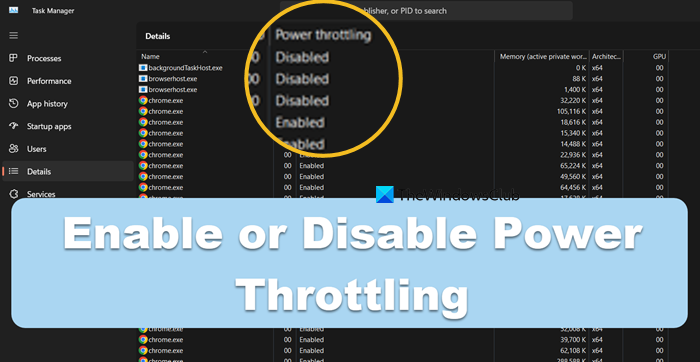
Enable or Disable Power Throttling in Windows 11/10
A built-in detection system in Windows prioritizes active user tasks and throttles other processes. The Task Manager can be used readily to find such apps. Follow the steps mentioned below to effectively manage your app by configuring Power Throttling.
- Find out which processes have Power Throttling enabled or disabled
- Enable/Disable Power Throttling
- Enable Power Throttling for Background Apps
Let us talk about them in detail.
1] Find out which processes have Power Throttling enabled or disabled
To check which apps and processes are power-throttled, you will have to open the Task Manager, select the Details tab, right-click on it or the Names tab, and click on Select columns. Here select Power Throttling to display the column, where you will be able to see the details.
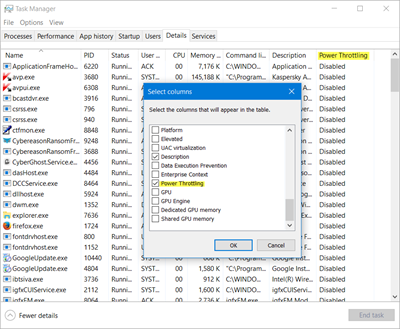
2] Enable/Disable Power Throttling
To disable Power Throttling in Windows 11/10 you will be required to change the active power plan from Balanced to High Performance.
Windows 11:
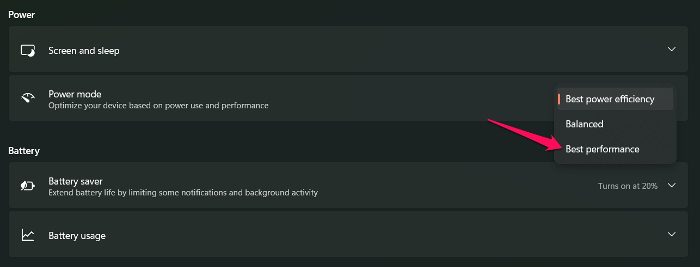
To switch to the High Performance mode on Windows 11, you are required to follow the steps given below.
- Right-click on the Battery indicator and select Power and sleep settings.
- Now, go to the Power Mode and select Best Performance.
- Then, open the Control Panel.
- Navigate to Hardware and Sound > Power Options.
- Finally, select High Performance.
Windows 10:
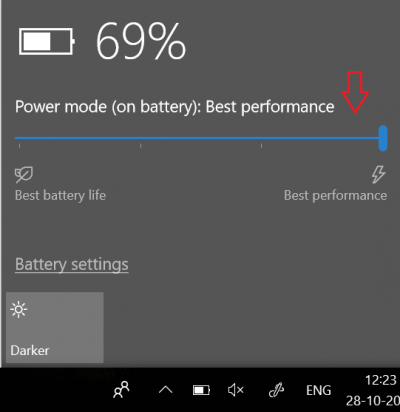
You can disable Power Throttling via the ‘Battery Indicator’ visible on the taskbar.
When you click the icon, it displays a slider with the selected power mode. It includes four positions, as shown in the image below when you move from left to right:
- Battery saver
- Better Battery (Recommended)
- Better performance
- Best performance
To disable Power Throttling, simply move the slider to the right to enable the Best Performance power plan. This will disable Power Throttling but it will increase the power consumption significantly as power saving functions are disabled as well in that mode.
Read: Change Low, Reserve, Critical Battery Level Notifications In Windows 11/10
3] Enable Power Throttling for Background Apps
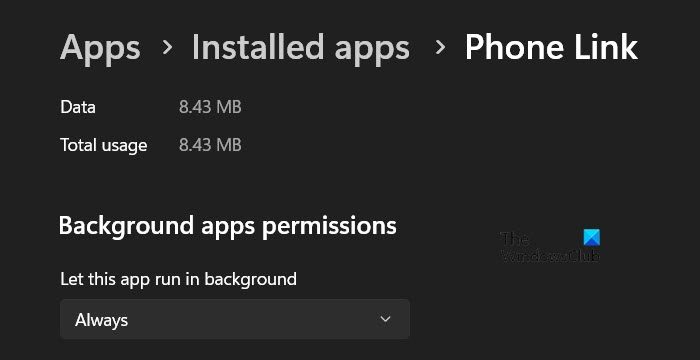
You have complete control over your Windows apps. As such, you can decide which apps should be throttled. You can choose to stop Windows 11/10 from managing the CPU resources for these apps.
Windows 11:
In Windows 11 you will have to open Settings > System > Power > Battery Usage. Go to the application that you want to configure, click on the three dots, and select Manage background activity. Then, in the Background apps permissions section, you need to select Always.
Note: If the three dots associated with apps in Battery Usage are not active, find that application in Apps > Installed apps, click on three dots, and select Advanced Options.
Windows 10:
Open Settings > System and select the Battery option.
Next, choose Battery Usage by App and locate the app you want to exclude from Power Throttling, and uncheck the option “Let Windows decide when this app can run in the background”. Once you disable the option, a new checkbox will appear, “Allow the app to run background tasks“. Check this option to allow the app to run in the background.
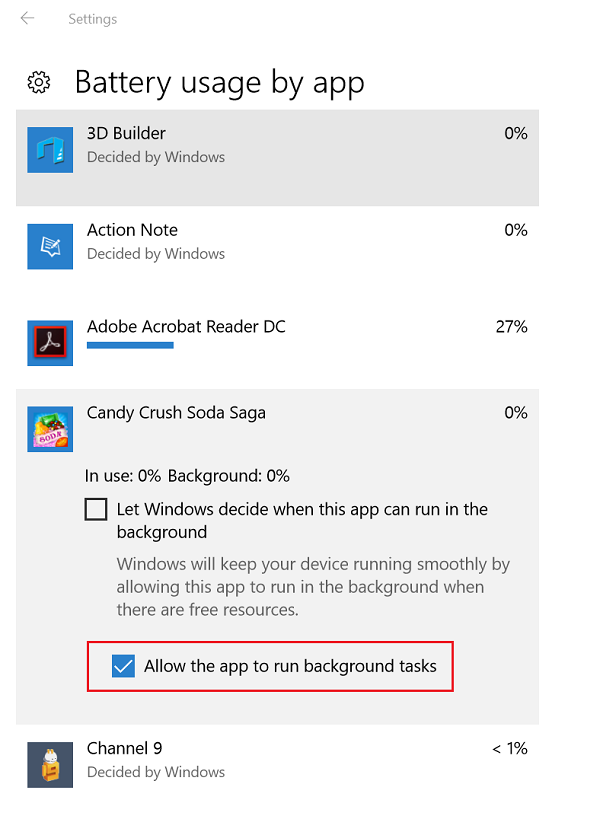
With Power Throttling, when background work is running, Windows places the CPU in its most energy-efficient operating mode and gets the work done in the best way using minimal battery usage.
I hope you find the feature working well for you.
Read: What is Reserve Battery Level? How does it differ from Critical Battery Level?
How to disable Power Throttling in Windows 11?
The easiest way to disable Power Throttling for any particular app is to allow it to run in the background. To do the same, go to Apps > Installed apps, click on three dots, and select Advanced Options. Finally, select Always in the Background apps permissions drop-down menu.
Read: How to limit Battery Charge in Windows 11/10
How do I turn on Power Throttling in Windows 10?
On Windows 10, you can go to Settings > System > Battery Options, look for the app you don’t want to throttle, and disable the “Let Windows decide when this app can run in the background” option for it. Finally, uncheck “Allow the app to run background tasks” and see if the issue is resolved.
Also Read: Improve Battery Life when watching Movies and Videos on Windows 11/10.